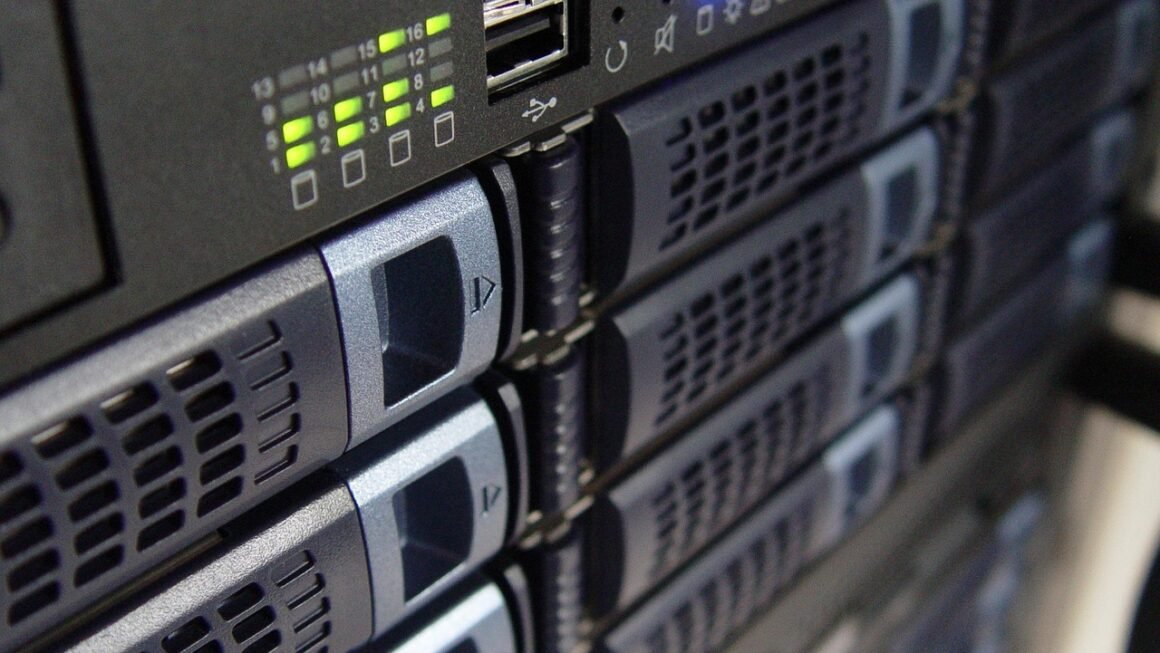Imagine a world where the power of countless computers is harnessed to solve problems far beyond the capabilities of a single machine. That world isn’t a distant dream; it’s the reality of distributed computing. From predicting weather patterns to analyzing massive datasets and powering your favorite online games, distributed systems are quietly revolutionizing how we process information and solve complex challenges. This article delves into the core concepts of distributed computing, exploring its architectures, benefits, and practical applications, equipping you with a solid understanding of this essential technology.
What is Distributed Computing?
Definition and Core Principles
Distributed computing is a computational paradigm where multiple independent computers work together as a single coherent system. These computers, often referred to as nodes or machines, communicate and coordinate their actions through a network to achieve a common goal. Unlike parallel computing, which typically involves tightly coupled processors within a single machine, distributed computing operates across physically separated machines, often in different locations.
- Key Principles:
Concurrency: Multiple components operate simultaneously.
Lack of Global Clock: No single, synchronized clock across the system.
Independent Failure Modes: Individual components can fail without bringing down the entire system.
Message Passing: Communication relies on exchanging messages between nodes.
Distinguishing Distributed Computing from Other Paradigms
It’s important to distinguish distributed computing from related concepts like parallel computing, cloud computing, and grid computing. While there’s overlap, key differences exist:
- Parallel Computing: Focuses on executing tasks simultaneously on multiple processors within a single machine.
- Cloud Computing: Provides on-demand access to computing resources (hardware, software, and data) over the internet. Distributed computing often underlies cloud infrastructure, but cloud computing also encompasses services like storage and databases.
- Grid Computing: A type of distributed computing that typically involves geographically dispersed resources, often owned by different organizations, working together on large-scale problems. Think of it as distributed computing on a massive, often heterogeneous, scale.
Architectures of Distributed Systems
Client-Server Architecture
The client-server architecture is a fundamental model where clients (e.g., web browsers) request services from servers (e.g., web servers, database servers). This is perhaps the most widely used distributed architecture.
- Example: When you browse a website, your web browser (the client) sends a request to a web server (the server). The server processes the request and sends back the website’s content.
Peer-to-Peer (P2P) Architecture
In a P2P architecture, nodes (peers) have equal capabilities and can act as both clients and servers. Resources are shared directly between peers without relying on a central server.
- Example: File-sharing networks like BitTorrent. Each user can download and upload files directly from other users in the network.
- Benefits: Decentralized, fault-tolerant, and scalable.
Message Queueing Systems
Message queues (e.g., RabbitMQ, Kafka) facilitate asynchronous communication between components. Producers send messages to a queue, and consumers receive messages from the queue. This decouples components, making systems more robust and scalable.
- Example: An e-commerce system where the order processing service and the shipping service communicate through a message queue. When an order is placed, the order processing service sends a message to the queue. The shipping service consumes the message and initiates the shipping process.
Microservices Architecture
Microservices is an architectural style that structures an application as a collection of loosely coupled, independently deployable services. Each service typically handles a specific business function.
- Example: An online streaming service may have separate microservices for user authentication, video streaming, payment processing, and recommendations. Each can scale and be updated independently.
- Benefits: Improved agility, scalability, and resilience.
Benefits and Challenges of Distributed Computing
Advantages of Distributed Systems
- Scalability: Easily scale the system by adding more nodes to handle increased load. Both horizontal (adding more machines) and vertical (upgrading existing machines) scaling are possible.
- Fault Tolerance: If one node fails, the system can continue to operate using other nodes. Redundancy and replication play key roles here.
- Cost-Effectiveness: Can leverage commodity hardware, reducing overall infrastructure costs.
- Improved Performance: Distribute workload across multiple machines to reduce processing time. Particularly useful for computationally intensive tasks.
- Resource Sharing: Facilitate sharing of resources like data, storage, and peripherals.
Challenges of Distributed Systems
- Complexity: Designing, implementing, and managing distributed systems are inherently complex. Considerations include concurrency control, data consistency, and fault tolerance.
- Communication Overhead: Network communication introduces latency and can become a bottleneck. Optimizing communication patterns is crucial.
- Data Consistency: Maintaining data consistency across multiple nodes can be challenging, especially in the face of failures. Techniques like distributed consensus algorithms (e.g., Paxos, Raft) are used.
- Security: Distributed systems are more vulnerable to security threats due to their distributed nature. Security measures must be implemented at multiple layers.
- Debugging: Debugging distributed applications can be difficult due to the distributed nature of the system and the potential for subtle interactions between components. Effective logging and monitoring are essential.
Practical Applications of Distributed Computing
Big Data Processing
Frameworks like Hadoop and Spark leverage distributed computing to process massive datasets that are too large to fit on a single machine. These frameworks distribute data and computations across a cluster of computers.
- Example: Analyzing social media data to identify trends, or processing financial transaction data for fraud detection.
- Tools: Hadoop, Spark, Flink, Cassandra
Cloud Computing Infrastructure
Cloud platforms like AWS, Azure, and Google Cloud rely heavily on distributed computing to provide on-demand computing resources. Virtual machines, storage services, and databases are all built on distributed systems.
- Example: Running web applications, storing data, and deploying machine learning models in the cloud.
- Services: AWS EC2, Azure Virtual Machines, Google Compute Engine
Scientific Computing
Distributed computing is used to solve complex scientific problems that require massive computational power. Examples include climate modeling, drug discovery, and particle physics simulations.
- Example: Folding@home project, which uses distributed computing to simulate protein folding for disease research.
Online Gaming
Massively multiplayer online games (MMOGs) rely on distributed systems to handle large numbers of concurrent players and maintain a consistent game world. Server farms distribute the game logic and data across multiple machines.
- Example: World of Warcraft, Fortnite
- Key Requirements: Low latency, high availability, scalability
Blockchain Technology
Blockchain networks like Bitcoin and Ethereum are fundamentally distributed systems. They rely on a distributed ledger that is replicated across multiple nodes. This distributed nature provides security and transparency.
- Example: Cryptocurrency transactions, supply chain management, and digital identity verification.
- Concepts: Distributed Ledger Technology (DLT), Consensus Mechanisms
Conclusion
Distributed computing has evolved from a niche area to a cornerstone of modern technology. Its ability to harness the power of multiple machines to solve complex problems makes it indispensable for a wide range of applications. While designing and managing distributed systems presents unique challenges, the benefits of scalability, fault tolerance, and cost-effectiveness outweigh the complexities for many use cases. As technology continues to evolve, distributed computing will undoubtedly play an increasingly vital role in shaping the future of how we process, analyze, and interact with data. Understanding the core principles and architectures of distributed systems is therefore essential for anyone working in the field of computer science and related disciplines. Embrace the complexity, leverage the tools, and you’ll unlock the potential of this powerful paradigm.



